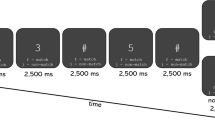Abstract
The anterior latissimus dorsi (ALD) and posterior latissimus dorsi (PLD) of the domestic chicken were used to study the possible differences in functional capillary density of slow and fast skeletal muscle. Frozen sections of each muscle were prepared for histochemical determination of fiber homogeneity, capillary/fiber ratios, and capillary densities. The functional capillary bed (percent open capillaries) was determined by comparing the number of ink-filled capillaries, after a systemic injection of india ink (for 90–120 s), with the total number of capillaries/mm2. ALD is a slow-tonic muscle consisting of two fiber types, with an average of 1.34±0.03 capillaries/fiber, a density of 699±20 capillaries/mm2, and a functional capillary bed representing 29% (ratio of open to total number of capillaries/mm2 was 0.286±0.022) of the total bed. PLD is a fast-twitch muscle also having two fiber types, with an average of 1.08±0.04 capillaries/fiber, a density of 561±26 capillaries/mm2, and a functional bed representing 11% (ratio of open capillaries to total is 0.111±0.014) of the total. These findings of increased capillarity (24% more capillaries/fiber and 25% more capillaries/mm2) and higher functional capillary density in an avian pure slow muscle (ALD), corroborate previous findings of increased capillarity around slow fibers in mixed muscles of several mammalian species. The values given represent the means ± SEM.
Similar content being viewed by others
References
Ashmore CR, Doerr L (1971) Postnatal development of fiber type in normal and dystrophic skeletal muscle of the chick. Exp Neurol 30:431–446
Ashmore CR, Doerr L (1971) Comparative aspects of muscle fiber types in different species. Exp Neurol 31:408–418
Ashmore CR, Doerr L (1976) Transplantation of the anterior latissimus dorsi muscle in normal and dystrophic chickens. Exp Neurol 50:312–318
Ashmore CR, Kikuchi R, Doerr L (1978) Some observations on the innervation patterns of different fiber types of chick muscle. Exp Neurol 58:272–284
Asiedu S, Shafiq SA (1972) Actomyosin ATP-ase activity of the anterior latissimus dorsi muscle of the chicken. Exp Neurol 35:211–213
Asmussen G, Kiessling A, Wohlrab F (1969) Histochemisch differenzierbare Sorten von Muskelfasern im M. latissimus dorsi des Huhnes. Experientia 25:959–961
Bass A, Lusch G, Pette D (1970) Postnatal differentiation of the enzyme activity pattern of energy-supplying metabolism in slow (red) and fast (white) muscles of the chicken. Eur J Biochem 13:289–292
Brånemark PI, Ekholm R, Lindhe J (1968) Colloidal carbon used for identification of vascular permeability. Med Exp 18:139–150
Cotter M (1973) In: Hudlická O (ed) Muscle blood flow (Table I —personal communication of data to Dr. Hudlická). Swets and Zeitlinger, Amsterdam, p 12
Folkow B, Halická HD (1968) A comparison between “red” and “white” muscle with respect to blood supply, capillary surface area and oxygen uptake during rest and exercise. Microvasc Res 1:1–14
Gray SD, Renkin EM (1978) Microvascular supply in relation to fiber metabolic type in mixed skeletal muscles of rabbits. Microvasc Res 16:406–425
Gutmann E, Syrovy I (1967) Metabolic differentiation of the anterior and posterior latissimus dorsi of the chick during development. Physiol Bohemoslov 16:232–243
Honig CR, Frierson JL, Patterson JL (1970) Comparison of neural controls of resistance and capillary density in resting muscle. Am J Physiol 218:937–942
Hudlická O (1969) Resting and postcontraction blood flow in slow and fast muscles of the chick during development. Microvasc Res 1:390–402
Klabunde RE, Johnson PC (1977) Reactive hyperemia in capillaries of red and white skeletal muscle. Am J Physiol 232:H411–H417
Klabunde RE, Mayer SE (1979) Effects of ischemia on tissue metabolites in red (slow) and white (fast) skeletal muscle of the chicken. Circ Res 45:366–373
Lindbom L, Tuma RF, Arfors KE (1980) Influence of oxygen on perfused capillary density and capillary red cell velocity in rabbit skeletal muscle. Microvasc Res 19:197–208
Lalone BJ, Johnson PC (1979) Arteriolar-capillary network analysis in resting cat sartorius muscle. Microvasc Res 17:Part 2:S19
Mai JV, Edgerton VR, Barnard RJ (1970) Capillarity of red, white, and intermediate muscle fibers in trained and untrained guinea-pigs. Experientia 26:1222–1223
Melichna J, Gutmann E, Syrovy I (1974) Developmental changes in contractile properties, adenosine-triphosphatase activity and muscle fibre pattern of fast and slow chicken muscle. Physiol Bohemoslov 23:511–520
McDonagh PF, Gore RW (1978) Comparison of hydraulic conductivities in single capillaries of red versus white skeletal muscle. Microvasc Res 15:269
McDonagh PF, Gore RW, Gray SD (1982) Perfused capillary surface area in postural and locomotor skeletal muscle. Microvasc Res 24:142–157
Myrhage R (1977) Microvascular supply of skeletal muscle fibers. Acta Orthop Scand Suppl 168:1–32
Pette D (1971) Metabolic differentiation of distinct muscle types at the level of enzymatic organization. In: Pernow B Saltin B (eds) Muscle metabolism during exercise. Plenum Press, New York, pp 33–49
Plyley MJ, Groom AC (1975) Geometrical distribution of capillaries in mammalian striated muscle. Am J Physiol 228:1376–1383
Ranvier L (1874) Note sur les vaisseaux sanguins et la circulation dans les muscles rouges. CR Seanc Soc Biol 26:28–31
Reis DJ, Wooten GT (1970) The relationship of blood flow to myoglobin, capillary density and twitch characteristics in red and white skeletal muscle in cat. J Physiol 210:121–135
Renkin EM, Gray SD, Dodd L, Lia B (1981) Heterogeneity of capillary distribution and capillary circulation in mammalian skeletal muscles. In: Bachrach AJ, Matzen MM (eds) Underwater physiology VII: Proc of the 7th symposium on underwater physiology. Undersea Medical Society, Bethesda, MD, pp 465–474
Romanul FCA (1965) Capillary supply and metabolism of muscle fibers. Arch Neurol 12:497–509
Schmidt-Nielsen K, Pennycuik P (1961) Capillary density in mammals in relation to body size and oxygen consumption. Am J Physiol 200:746–750
Author information
Authors and Affiliations
Rights and permissions
About this article
Cite this article
Gray, S.D., McDonagh, P.F. & Gore, R.W. Comparison of functional and total capillary densities in fast and slow muscles of the chicken. Pflugers Arch. 397, 209–213 (1983). https://doi.org/10.1007/BF00584359
Received:
Accepted:
Issue Date:
DOI: https://doi.org/10.1007/BF00584359




